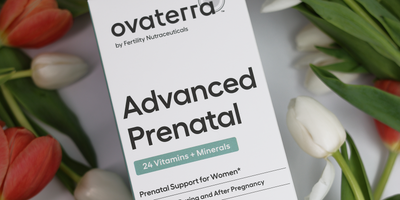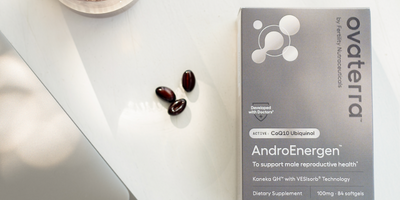Last updated: March 14, 2023
What is ovarian reserve? Simply put, the term ovarian reserve refers to how many eggs a woman has in her ovaries. So, ovarian reserve directly correlates with her chances of getting pregnant.
Women are born with all the eggs for their lifetime – about 1 to 2 million of them at birth. The eggs are immature and stay dormant. Once menstrual cycles start, thousands of immature eggs are recruited into the maturation process each cycle. During this 90- to 120-day process, a vast majority of the recruited eggs die off, with just one reaching full maturity and eventual ovulation. So, even though only one egg is ovulated, thousands more are used up each month.
Eventually, just 1,000 eggs or so remain in each woman’s ovaries by menopause.
Because each immature egg represents a chance of conception, as the number of eggs decline, the chance of conception also goes down. Ovarian reserve is the term that captures this concept.
Some doctors think that how well the maturation process works also has an impact on the viability of the one egg that reaches ovulation in each cycle. However, because the quantity and quality of eggs seem to go hand-in-hand anyway – and there isn’t an easy way to measure egg quality – we use the measurements of egg numbers as the primary indicator of ovarian reserve.
How is ovarian reserve measured?
First and foremost, ovarian reserve is measured through blood tests that detect the levels of two hormones involved in the eggs’ final maturation journey toward ovulation: AMH and FSH.
If you aren’t actively trying to conceive now, you can ask your doctor to measure your AMH and FSH as a part or your annual OBGYN visit; if you are currently trying and don’t know your levels, you may want to ask your doctor to perform these blood tests, so you know where you stand.
These ovarian reserve markers are also available as at-home fertility tests. Your doctor may also perform an ultrasound to directly count antral follicles that contain developing eggs.
AMH as a measure of ovarian reserve
AMH, short for anti-Mullerian hormone, is secreted by the immature eggs that are waiting to be recruited into the maturation process. So, the more immature eggs your ovaries have, the higher your AMH. In other words, AMH declines when ovarian reserve declines.
AMH is a convenient indicator of ovarian reserve, because AMH levels don’t fluctuate based on where you are in your monthly cycle, unlike FSH, which we’ll discuss shortly. However, AMH is suppressed when you are on hormonal birth control, so this won’t be a reliable indicator of ovarian reserve for women on hormonal birth control.
Doctors usually measure both AMH and FSH to evaluate ovarian reserve, because they capture different aspects of ovarian reserve.
FSH as a measure of ovarian reserve
FSH, which stands for follicle-stimulating hormone, does exactly what the name suggests: FSH encourages immature eggs to develop to the ovulation-ready stage. Eggs need FSH to mature, and when not enough eggs are going through the maturation process, the brain sends a signal to the pituitary to produce more FSH. This is why FSH levels are higher when ovarian reserve – the number of eggs in the ovaries – are low.
As women age, their FSH levels rise naturally. By menopause, it reaches 30-40 mIU/mL. What’s defined as a normal level of FSH for women in their reproductive years varies between labs and studies, but as an example, a study of over 1,200 women found the following average FSH levels:
- Younger than 33: 6.46 mIU/mL
- Ages 33-37: 6.74 mIU/mL
- Ages 38-41: 7.05 mIU/mL
Another study that examined the FSH levels of women with regular menstrual cycles found these averages:
- Ages 20-29: 4.9 mIU/mL
- Ages 30-39: 5.5 mIU/mL
- Ages 40-44: 5.2 mIU/mL
- Ages 45-49: 13 mIU/mL
As you can see, the “normal” FSH levels are different depending on the study – and which lab measured the FSH levels. When looking at your own levels, it’s important to compare them against the reference ranges provided by the lab that ran your blood test. Your doctor can also help you interpret the levels and understand what they mean for your current and future reproductive health.
FSH levels change throughout a menstrual cycle, so an FSH level taken on different days of your cycle can’t be compared against each other. FSH is measured on the second or third day of the menstrual cycle, and normal levels are based on measurements taken on these days.
What does high or low ovarian reserve mean for my reproductive health?
All things equal, women with high ovarian reserve have better chances of pregnancy than women with low ovarian reserve. They have more eggs and they are of higher quality – which means higher chances of getting pregnant and maintaining that pregnancy to term.
If an AMH or FSH test identifies low ovarian reserve and you have family plans for much later in life, you may want to consider moving up the timeline or preserve your current fertility through egg freezing. Whether you are actively trying now or planning on a later pregnancy, it's worth talking with a knowledgeable doctor about your options early.
Can ovarian reserve markers tell me about my reproductive health in the future?
Yes, to a degree. Your current AMH and FSH levels can give you some clue as to how your reproductive health will evolve in the future. If your AMH is low or FSH is high for your age, that’s a sign that your ovarian reserve may stay low for your age or keep declining faster than your peers. If your hormone levels indicate that your ovarian reserve is high for your age, you may have a longer runway before the natural decline of ovarian reserve sets in for you.
What other indicators are there for my future ovarian reserve?
Aside from your current ovarian reserve parameters, there are a few things that can give you a clue as to how your ovarian reserve will change in the future:
- Your mother’s age at menopause: Studies have found that women whose mothers entered menopause early are also more likely to experience an early decline in ovarian reserve.
- Previous pregnancies and deliveries: Studies suggest that women who’ve had at least one pregnancy with a live birth are more likely to have healthy ovarian reserve for their age in the future.
- Medical conditions: Certain medical conditions, such as autoimmune diseases like Crohn’s disease or rheumatoid arthritis, endometriosis and some type of PCOS, have been associated with early decline in ovarian reserve.
- Medical treatments: Chemotherapy and radiation for cancer can compromise the health of your ovaries and immature eggs inside. Surgeries that remove a portion of the ovaries can also lead to loss of ovarian reserve, because these surgeries remove the immature eggs in the ovaries.
- Genetic conditions: Women with certain genetic conditions, such as Turner Syndrome and Fragile X Syndrome, are known to have lower ovarian reserve than their age peers.
- Lifestyle factors: Some studies (like this one) suggest that lifestyle factors like coffee consumption, exposure to second-hand smoke and weight can be a predictive factor of ovarian reserve.
The bottom line on ovarian reserve, AMH and FSH
AMH and FSH can give you an idea of how many eggs your ovaries have remaining. Combined with other pieces of information, AMH and FSH results can also hint at how your ovarian reserve may evolve in the future.
It’s important, however, to discuss the implications of your current ovarian reserve with your doctor. A low level from one test may not mean you have to stress out; conversely, a normal or high level can lead to false sense of security. Your doctor should be able to provide context and help you understand what the test results can and cannot tell you.
Please reach out if you have any questions. We are with you.












